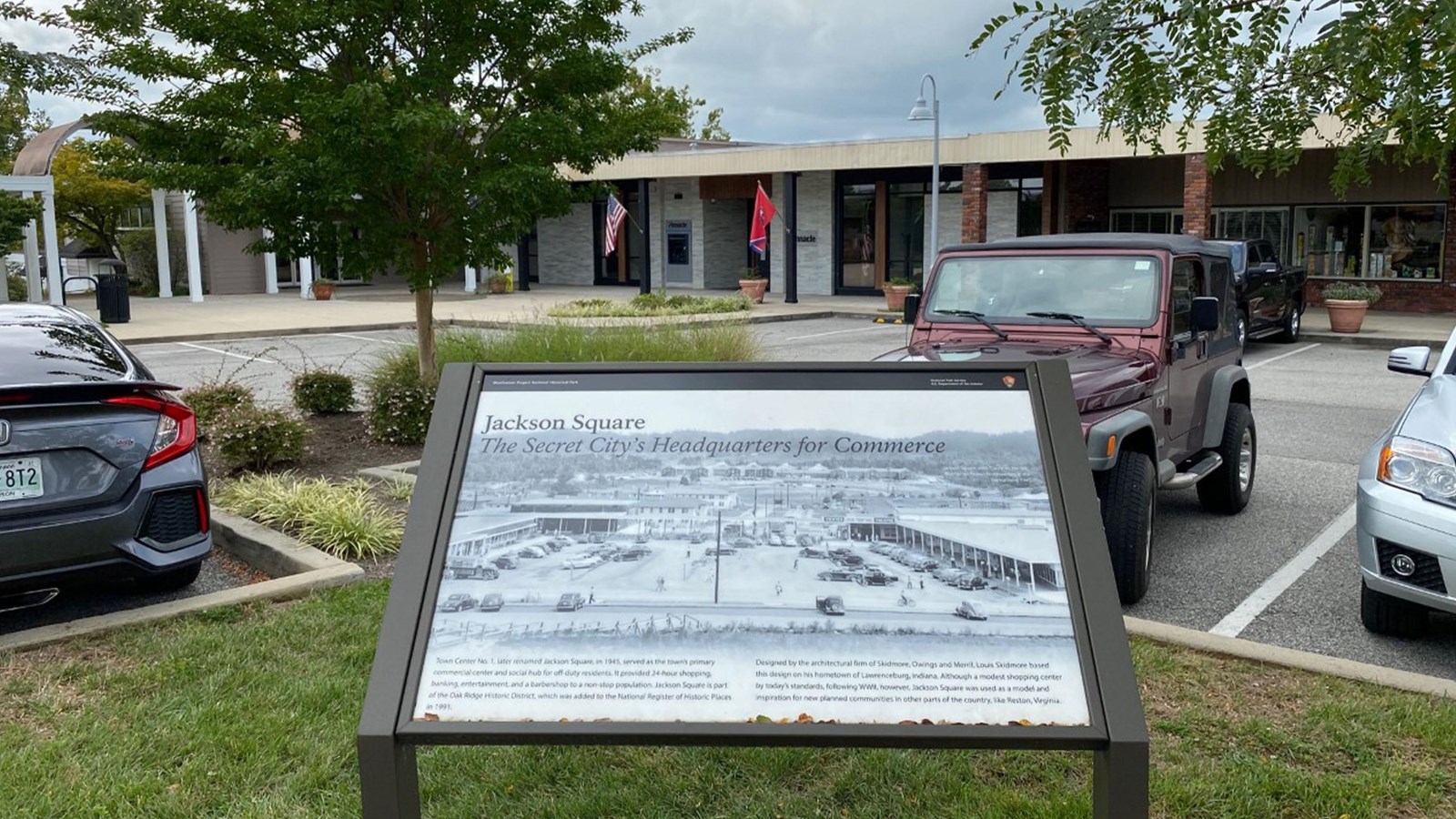Last updated: February 1, 2023
Place
Jackson Square

NPS/KLEIN
Food/Drink - Restaurant/Table Service, Fuel (Unleaded), Gifts/Souvenirs/Books
Imagine strolling into Jackson Square on a balmy summer evening after a long week of work for the Manhattan Project. This is your time to shop and socialize. Jackson Square buzzes with activity, and familiar faces cross your path. 165 businesses are available to you. After you pick up your boots from one of the six shoe repair shops, you walk to the drugstore and meet friends at the soda fountain. A haircut is also in order. With 13 barbershops and eight beauty salons in the square, you should be able to fit in a trim before catching the last bus home.
At the onset of the Manhattan Project, architects and administrators knew that if they wanted workers to stay in these newly-built secret communities they would have to include shopping and entertainment districts with the same amenities found in other communities throughout the United States. Oak Ridge, Tennessee, the largest and most populous planned community of the Manhattan Project, provided housing, transportation, shopping, and entertainment for its workers and their families. Jackson Square was the first of several Oak Ridge developments where Manhattan Project workers and their families found respite from their top-secret way of life.
Town Center No. 1- later called Jackson Square- opened in 1943. It offered 24-hour grocery shopping with 12 grocery stores and 10 farmers’ markets, eight gasoline service stations and garages, seven department stores, six restaurants and lunchrooms, three insurance companies, a pharmacy, a bowling alley, banking services, a movie theater, a dance hall, a flower shop, a portrait studio, and an international correspondence school. Architect Louis Skidmore based the city center’s design on his hometown of Lawrenceburg, Indiana. After the war, when the secret city opened to the general public, Jackson Square became an inspiration for several shopping centers around the nation. The National Park Service added Jackson Square to the National Register of Historic Places in 1991 as part of the Oak Ridge Historic District.
With its central location, Jackson Square provided a place for people to gather. The fire hall, high school, and guest house were all in central Jackson Square. When news of the US victory in World War II reached Oak Ridge, atomic workers and their families flocked to Jackson Square to celebrate. However, as communal as Jackson Square was, not all members of the community were welcome. The US government respected the South’s Jim Crow Laws and segregation at Oak Ridge. African American workers and their families could not attend first-run movies at the theater. They couldn’t enter some businesses. And because Black workers earned lower wages than white people at Oak Ridge, they simply couldn’t afford much of the merchandise and services. In addition, people of color could not work at places that did not have separate restrooms. Churches held segregated services. Housing for Black people consisted of segregated hutments that were further segregated by sex, regardless of marital status and family ties. Black children were not permitted to live on the townsite until 1946.
Continue Your Journey
Jackson Square remains a vibrant shopping center, providing similar goods and services to visitors that Manhattan Project workers would have found during World War II. Some of the commercial center buildings remain the same while others were remodeled or converted. Jackson Square is within walking distance to several Manhattan Project-related historic sites, including the Guest House (Alexander Inn), the Chapel on the Hill, and the Community Tennis Courts.
